Last week, the government body Build Skills Australia released a report claiming that there simply aren’t enough tradespeople to meet Labor’s target to build 240,000 homes a year.
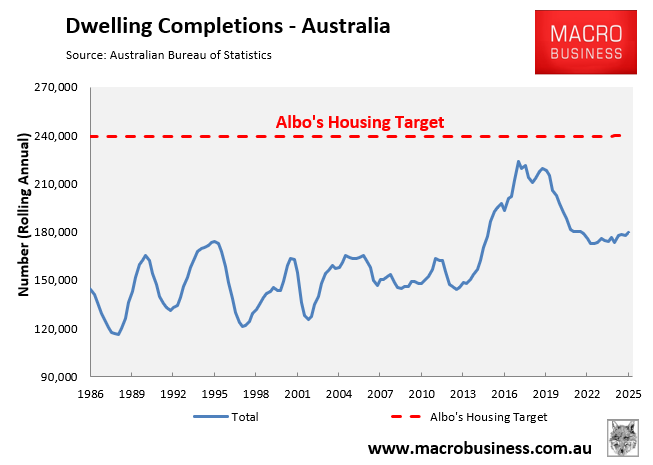
Build Skills Australia shows that Australia’s rate of construction per new resident has collapsed, despite the volume of homes built over the past 20 years (174,000 dwellings annually) being significantly higher than the previous 20 years (145,400 dwellings annually):
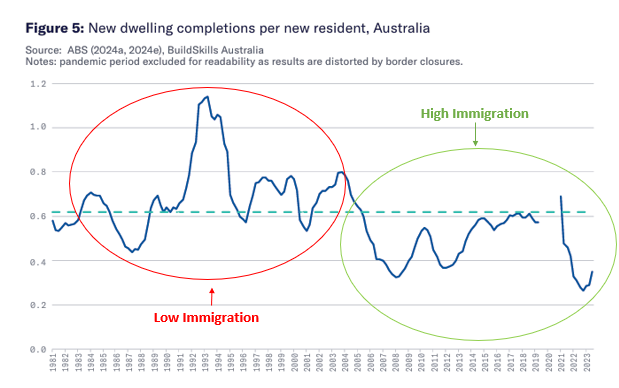
This is because Australia’s population growth surged via record net overseas migration:
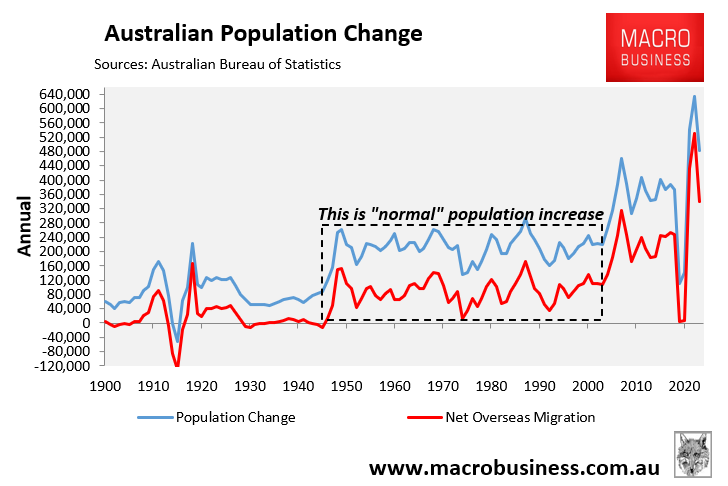
Build Skills Australia says that another 117,000 tradespeople will be needed to meet the Housing Accord target:
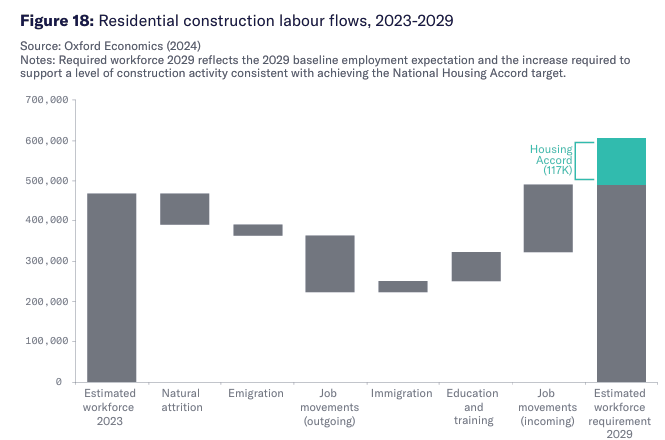
However, the number of apprentices is declining:
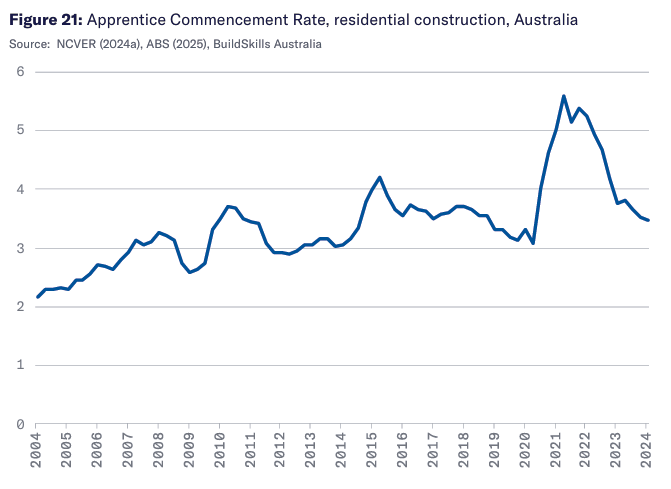
And not only are there not enough trades and apprentices, but they are also getting less work done:
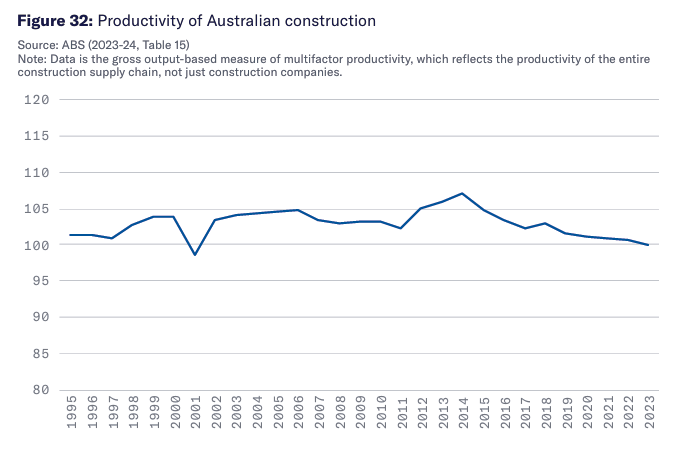
Build Skills Australia believes the construction workforce can be bolstered via five main channels:
- Apprenticeships—boosting completions could secure 23,000 additional skilled workers.
- Female participation—more women in construction could add 51,000 to the workforce.
- Immigration–securing a larger share of skilled migrants could bring in 32,000 workers.
- Productivity gains—a 5% improvement would be equivalent to adding 30,000 workers.
- Training system capacity—none of this can be achieved without a scaled-up VET sector.
Regarding immigration, the report acknowledges that “the demand impact is particularly significant in residential construction, where every new migrant requires additional housing and associated services, creating an immediate need for more labour to deliver these essentials”.
Therefore, “to maintain labour market balance, the increased demand generated by migrants-as-residents must be offset by a corresponding increase in migrants-as-workers”.
Build Skills Australia explained how few recent migrants actually work in construction:
Over the last 20 years, the residential construction sector has consistently employed between 4.0% and 5.0% of the working-age population in Australia.39 This ratio offers a reasonable benchmark for the level of labour resourcing required to meet housing needs. It implies that for every 100 new residents, 4–5 additional residential construction workers are required to support their housing needs.
If immigration is to make a net positive contribution to labour supply, the proportion of immigrants employed in residential construction must exceed this ‘hurdle rate’ of 4.0%-5.0%. Otherwise, local resources will need to be diverted from other activities to meet the housing needs of the growing population.
However, only 3.2% of recent immigrants—those who arrived in the last decade—are employed in the residential construction sector. This indicates that immigration’s contribution to population growth has not been matched by its contribution to the workforce needed to construct housing for these additional residents…
This dynamic highlights the importance of aligning migration settings with labour market demands. As it stands, the residential construction share of the immigration intake must increase by as much as 40% before it can be considered a viable strategy for boosting labour supply.
Build Skills Australia’s analysis aligns with data compiled by the pro-migration Grattan Institute, which showed that migrants are vastly underrepresented in the construction industry:
“Migrants who arrived in Australia less than five years ago account for just 2.8% of the construction workforce, but account for 4.4% of all workers in Australia”, Grattan reported.
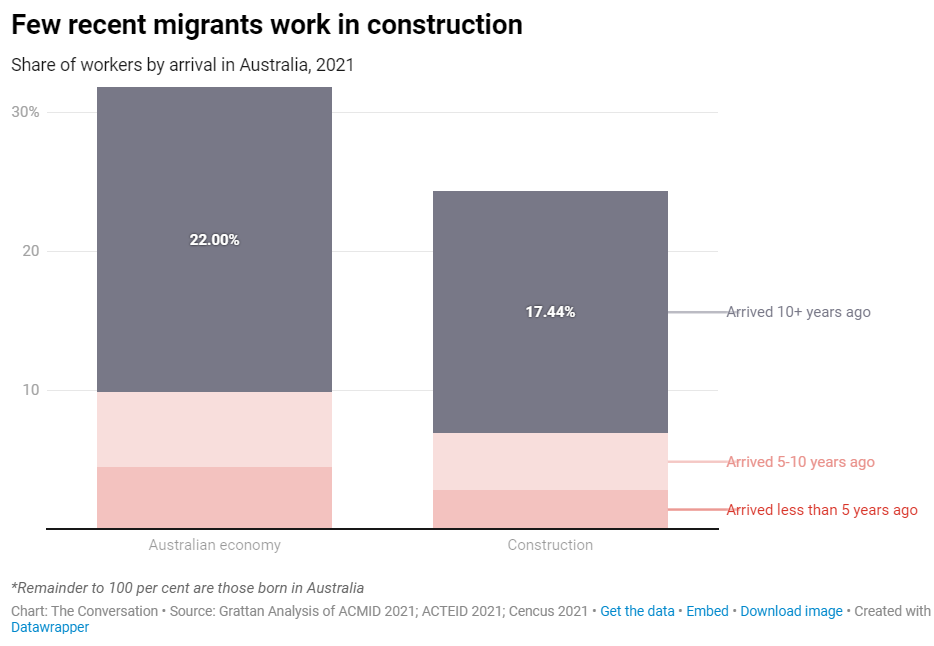
Leading pro-Big Australia shills Peter McDonald and Alan Gamlen also admitted that Australia’s immigration is worsening Australia’s housing and infrastructure shortages by lifting demand without adding to labour supply:
“In 2023-2024, the permanent programme delivered just 166 tradespeople, negligible against national needs. By contrast, more than 5,000 entered via the temporary skilled stream in 2024-2025”.
“Even this is insufficient to close the gap”.
As a result, Australia’s immigration program is directly driving Australia’s housing shortage by adding far more to demand than supply.
The optimal solution, therefore, is to run a significantly smaller migration program that prioritises quality over quantity and fills genuine skills shortages.
Otherwise, Australia’s housing shortage will continue to worsen.

